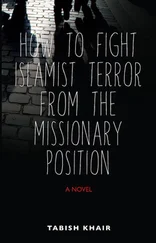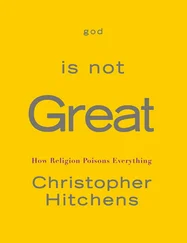When the girl Agnes Bojaxhiu was born on 27 August 1910 in Skopje, to an Albanian Catholic family, the idea of the ‘mission’ as a vocation was still very much alive. And in that region, yesterday as today, allegiance to the Church was more than a merely confessional matter. It was, and is, imbricated with a series of loyalties to nation, region and even party. We know little enough of Agnes’s early life, and the devotional tracts written about her are not very illuminating, but it seems that her father Nikola, a prosperous shopkeeper, died in a nationalist squabble when the girl was only eight. The family was strongly religious and adhered to the Parish of the Sacred Heart, which in Skopje was synonymous with Albanian identity. Through the influence of a Jesuit priest she became interested in missionary work and at the age of twelve, on her own account, she first received the idea that her life should be dedicated to spreading the word among the poor. But she told Malcolm Muggeridge that ‘at the beginning, between twelve and eighteen, I didn’t want to become a nun. We were a very happy family. But when I was eighteen, I decided to leave my home and become a nun.’ Having entered a convent — the Congregation of the Sisters of the Blessed Virgin Mary of Loreto — she left Skopje for Zagreb, and from there travelled to Dublin, where the Loreto Sisters have their headquarters to this day. Shortly after Christmas Day 1928, her ship made landfall in Colombo, en route to the Loreto mission in Bengal.
The account of Agnes’s early life given by Dr Gjergji is intriguing for its fragmentary character. We learn, for example, that the future Mother Teresa’s brother, Lazzaro, ‘went to Italy in 1939, remained there during and after the war, and finally died there’. We learn also that ‘When, in the fall of 1910, the Serbians reached Skopje, the missionaries had to limit their pastoral action to the city itself. Things got worse at the outbreak of war in 1914’. From this terse account we can only guess at the impact on the fervent Bojaxhiu family of the second Balkan war and the two world wars. However, a certain amount of background can be inferred.
Albanians divide between members of the Tosk and Gheg peoples, separated south and north, respectively, by the Shkumbini river. Most are Muslim, with an Orthodox Christian minority among the Tosks and a Roman Catholic one among the Ghegs. The Ghegs, who include the Bojaxhiu family, populate the much-disputed region of Kosovo. Now an ‘autonomous region’ of Serbia, Kosovo has an Albanian’ majority, but it is also home to the Orthodox Serbs’ holiest battlefield — the site of a fourteenth-century rout by the Turks.
In 1927 King Zog of Albania signed a treaty with Benito Mussolini which made Albania into an effective protectorate of Italian fascism. The treaty provided for the training of the Albanian military by Italian officers and the relocation of the Bank of Albania to Rome. Even before the subsequent Concordat signed between Mussolini and the Vatican, which gave papal imprimatur to the fascist project, the treaty established favourable conditions for the adoption of Roman Catholicism throughout Albania. The Church was permitted to open numerous schools, while the schools run by Greek Orthodox authorities were closed. (Greece took Albania to the World Court on this matter and in 1933 won a landmark case defining the rights of minorities to their own language and religion.) Nor did the advent of the Second World War diminish the enthusiasm of ‘Greater Albania’ for the Axis. Even as Hitler was taking over Athens, a delegation of Albanian notables waited upon Mussolini in order to present him with the crown of Skanderbeg, the Albanian national hero.
A striking fact about this period is the fealty of all Albanian extremists to the idea of ‘Mother Albania’. When Mussolini finally collapsed, the Albanian Communists, under the leadership of Enver Hoxha, echoed, at a meeting of Albanian political groups that included the fascists, the demand that Kosovo be incorporated into Albania after the war. Tito’s partisans were strong enough and (then) weighty enough in Moscow to negate this demand. But many of Hoxha’s postwar cabinet members were unpurged members of the Albanian Youth of the Lictor, a prewar fascist movement which cherished the idea of military expansion. (Hoxha’s successor as dictator, Ramiz Alia, was one of those who made this bizarre yet seemingly consistent traverse of the political spectrum.)
Before the war, the ideas of fascism, Catholicism, Albanianism and Albano-Italian unity were closely identified. Afterwards, religious identity was officially suppressed by Hoxha’s proclamation of the ‘world’s first atheist state’. None the less, the evidence implies that irredentist ideology persisted under Stalinist disguise and had at least as much to do with Albania’s foreign-policy alignments as did any supposed doctrinal schism over the canonical texts of Marx and Lenin. An Albanian Catholic nationalist, in other words, might, on ‘patriotic’ questions, still feel loyal to an ostensibly materialist Communist regime.
How else are we to explain the following entry from the Yearbook on International Communist Affairs 1990, published by the Hoover Institution at Stanford University and reviewing developments in all countries of the Communist world?
After numerous previous attempts to secure a visa had been denied, in August the government allowed Mother Teresa to visit Tirana…. Although the visit was called ‘private,’ Mother Teresa was received by Mrs. Hoxha, Foreign Minister Reis Malile, Minister of Health Ahmet Kamberi, the Chairman of the People’s Assembly Petro Dode, and other state and party officials. Dutifully, the Albanian-born nun and Nobel peace prize laureate placed a wreath at the monument of ‘Mother Albania’ and ‘paid homage and laid a bouquet of flowers on the grave of Comrade Enver Hoxha.’ The world-renowned Catholic nun did not utter a word of criticism against the regime for its brutal suppression of religion.
The ‘Mother Albania’ monument, it might be worth emphasizing, is not an abstract symbol of sentimental nationhood. It is the emblem of the cause of Greater Albania. A nearby museum displays the boundaries of this ambition in the form of a map. ‘Mother Albania’ turns out to comprise — in addition to the martyred province of Kosovo — a large piece of Serbia and Montenegro, a substantial chunk of formerly Yugoslav Macedonia and most of that part of modern Greece now known as Epirus.
I possess a film of ‘Mother Teresa’ making her homage to ‘Mother Albania’ — as well as to its patron, the pitiless thug Enver Hoxha — and it invites the same question as does the infamous embrace in Haiti: What is a woman of unworldly innocence and charity doing dans cette galère? Apologists have said, of the Albanian case, that it was only natural for Mother Teresa to make a few obeisances in order to visit the graves of her ancestors and, of the second, that a few compromises were necessary so that her order would be allowed to work freely in Haiti. Interestingly enough, these are not excuses that have been tendered by Mother Teresa herself, who keeps her own counsel on both matters (and on many others besides).
It is at least worth considering whether Mother Teresa made both of these trips (and many others) in furtherance of the more flinty political stands taken by hard-liners in her own Church. The personal conduct and the questionable policy are at least congruent in each instance. In the case of Haiti, the Vatican had long taken a position in favour of the ‘Duvalierist’ oligarchy. When the Reverend Father Jean-Bertrand Aristide began his campaign of charismatic populism against the regime, he encountered instant hostility from the Church hierarchy, which eventually suspended him from his order. By the time that Aristide had been triumphantly elected, ignominiously deposed by a military junta and finally restored to power by international intervention, the Vatican was the only government in the world which still retained formal diplomatic relations with the usurping dictatorship. Mother Teresa’s activism, then, was representative of the most dogmatic line taken by her Church.
Читать дальше











